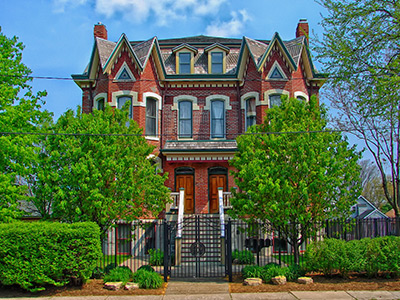




MISSION
Vision 21 Linking Systems of Care (LSOC) for Children and Youth in Illinois has developed Illinois HEALS (Helping Everyone Access Linked Systems). Illinois HEALS leverages federal, state, and community resources and partnerships to implement policies, practices, and programs that strengthen the capacity of Illinois’ communities to recognize when victimization has occurred and connect and engage young victims and families in needed services.
Strategies
Strategy highlights included completing a 15-month planning process that culminated with a detailed statewide plan that guided a multipronged statewide implementation effort. During 2019, the project entered the implementation phase and piloted the Illinois Heals model in a five-county region of southern Illinois that has a high level of need and pre-existing community based agencies with experience supporting systems of care. The Illinois HEALS pilot applied a relational approach to engage, connect, and recognize young victims. Project staff convened existing health care networks across the region to identify service needs, assisting young victims and their families with navigating screening, providing advocacy while appropriate clinical services are being identified, making service referrals to high-quality services and providing regular follow-ups to ensure the appropriate services are being provided.
Funded Agency
The Illinois Criminal Justice Information Authority (ICJIA) served as the lead agency for the Vision 21: Linking Systems of Care for Children and Youth project. The mission of ICJIA is to improve the administration of justice through grant funding, research, policy and planning, and information systems and technology. ICJIA’s mandate was recently expanded to include strategic planning and technical assistance in the area of trauma services for victims of crime. ICJIA brings together key leaders from the justice system and the public to identify critical issues facing the criminal justice system in Illinois, and to propose and evaluate policies, programs, and legislation that address those issues. For more information on Illinois' state project visit their LSC State Agency Website.
State Data FAQs
What do we know about children and youth in Illinois based on the census?
What are the racial and ethnic demographics for children and youth populations in Illinois?
According to 2017 population estimates, White youth comprise 53% of the population ages 0-24 in Illinois, with Hispanic children and youth comprising 24%; Black 17%; Asian 6%; and American Indian less than 1%.
How are children and youth populations changing in Illinois?
Between 2000 and 2017, white children and youth, ages 0-24 within the state general population, decreased 18% followed by the population of Black youth that decreased 16% and American Indian 11%. In contrast, Asian children and youth increased 44 % and the Hispanic population of children and youth increased 24%.
Puzzanchera, C., Sladky, A. and Kang, W. (2018). "Easy Access to Juvenile Populations: 1990-2017." Online. Available: https://www.ojjdp.gov/ojstatbb/ezapop/
What do we know from national surveys of youth behavior in schools in Illinois?
How prevalent is bullying at high school in Illinois?
About 1 in 5 high school students report being bullied while at school and about 1 in 7 (15%) report being subject to electronic bullying. Overall, 6% of high school students reported that they did not go to school because they felt unsafe.
How prevalent is dating violence among high school students in Illinois?
About 1 in 10 (11%) of all high school students reported experiencing physical dating violence (i.e, being hit, slammed into something, or injured with an object or weapon on purpose), and 1 in 10 (11%) reported experiencing sexual dating violence (i.e., kissing, touching, or being forced to have sex when they did not want to by someone they were dating).
What do we know from national data collections concerning child abuse and neglect in Illinois?
How many children who received an investigation were substantiated as victims in Illnois?
In 2016, there were 176,169 reports of maltreatment involving 140,480 unique children. More than half (54%) of these reports were unsubstantiated, and 28% resulted in no finding of maltreatment. Nearly one-fifth (18%) of all reports were substantiated, resulting in 29,059 unique child maltreatment victims in 2016.
What is the most common type of child maltreatment in Illinois?
Neglect (64%) was by far the most common form of maltreatment. Comparatively, physical abuse (20%) and sexual abuse (14%) were less common.
How many children die as a result of maltreatment in Illinois?
In 2016, there were 64 reported fatalities representing less than one half of 1% of all child victims. The child maltreatment fatality rate of 2.19 (per 100,000 children) in Illinois was below the national rate (2.36).
What is known about child maltreatment perpetrators in Illinois?
Parents and other family members are the most common child maltreatment perpetrators. In 2016, parents accounted for 76% of reported perpetrators and 7% were other relatives. Unmarried partners of a child’s biological parent accounted for a 5% of perpetrators.